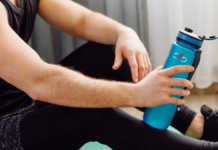Table of Contents
Flexibility training is an often overlooked but crucial component of a well-rounded fitness routine. It involves stretching exercises that help improve the range of motion in your joints and the length of your muscles. Incorporating flexibility training into your routine can enhance your overall fitness, reduce the risk of injury, and promote better posture and mobility. In this article, we’ll explore the importance of flexibility training and provide tips on how to incorporate it into your daily routine.
**1. The Benefits of Flexibility Training
Flexibility training offers a wide range of benefits:
- Improved Range of Motion: Stretching exercises increase your joint mobility, allowing you to move more freely.
- Injury Prevention: Flexible muscles and joints are less prone to strains, sprains, and injuries.
- Better Posture: Flexibility training can alleviate muscle imbalances that contribute to poor posture.
- Stress Reduction: Stretching promotes relaxation and can reduce stress and tension.
- Enhanced Performance: Greater flexibility can improve athletic performance and make everyday activities easier.
**2. Types of Flexibility Training
There are various forms of flexibility training, including:
- Static Stretching: Holding a stretch position for a specific duration to lengthen muscles and improve flexibility.
- Dynamic Stretching: Controlled movements that take your joints through their full range of motion, often used as a warm-up.
- PNF (Proprioceptive Neuromuscular Facilitation): A technique that combines stretching and contracting of specific muscle groups.
- Yoga and Pilates: Mind-body practices that incorporate stretching and flexibility exercises.
- Foam Rolling: Using a foam roller to release muscle tension and improve flexibility.
**3. Incorporating Flexibility into Your Routine
Here are tips on how to add flexibility training to your daily routine:
- Warm Up: Start with a brief warm-up, such as five minutes of light cardio, before stretching to prepare your muscles for flexibility exercises.
- Include Stretching: Dedicate at least 10-15 minutes to stretching exercises after your regular workout. Focus on major muscle groups, like your legs, back, chest, and shoulders.
- Hold Stretches: When performing static stretches, hold each stretch for 15-30 seconds, aiming to feel a gentle pull, not pain. Repeat each stretch 2-4 times.
- Dynamic Stretches: Incorporate dynamic stretching into your warm-up routine. Examples include leg swings, arm circles, and hip rotations.
- Stretch Throughout the Day: Take short stretching breaks during the day, especially if you have a sedentary job. Stretch your neck, shoulders, wrists, and hips to relieve tension.
- Yoga and Pilates: Consider participating in regular yoga or Pilates classes, which combine flexibility and strength training in a mindful practice.
- Stretching Tools: Use tools like foam rollers, resistance bands, or yoga blocks to assist with stretching and deepening your stretches.
- Listen to Your Body: Pay attention to your body’s signals. Never force a stretch or push through pain. Flexibility should be gradual and comfortable.
- Consistency: Make flexibility training a consistent part of your routine. Aim to stretch at least 3-4 times a week.
Conclusion
Incorporating flexibility training into your fitness routine is a wise choice for promoting overall well-being and reducing the risk of injury. Whether you’re an athlete looking to improve performance or simply want to enhance your daily mobility, flexibility exercises can be tailored to your needs and preferences. By dedicating time to stretch regularly and making it a habit, you can enjoy the many benefits of improved flexibility and a more balanced and functional body.






